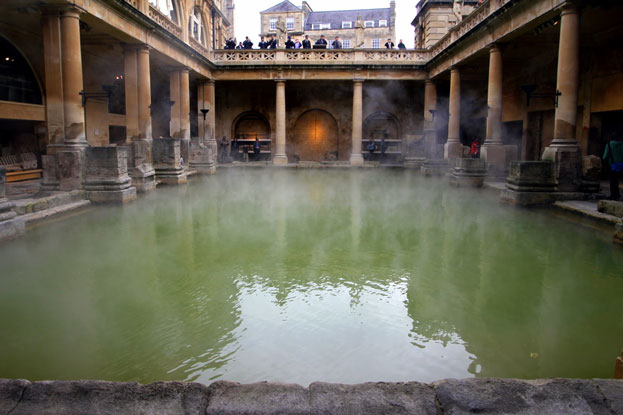After the conquest of Britain in AD 43 by the Romans many of the hot baths constructed in Europe have become major historic cities. Aquae Sulis, constructed in 60-70, continues, under the name of Bath, to be a renowned spa. Its apogee was in the 18th century. The Romans built a temple there dedicated to Sulis, a local divinity that they associated with Minerva, as well as a hot bath and including two pools, five baths (four Roman and one medieval) and all the standard equipment of tepidaria, frigidaria and hypocausts. These hot baths and its source, which yields over 1,200,000 litres of water daily at more than 46 °C, were built between the 1st and 4th centuries, and their gradual rediscovery began in 1755.

Continent: Europe
Country: United Kingdom
Category: Cultural
Criterion: (I) (II)(IV)
Date of Inscription: 1987
Medieval Bath
After the fall of the old Roman city, medieval Bath became a major wool-producing centre. The religious influence of the city was considerable from 1091 to 1206. A cathedral was built during the episcopacy of Robert de Lewes; it was demolished shortly after 1495 and was later reconstructed as an abbey church in the Perpendicular style. The abbey church was still uncompleted at the time of the Reformation and the work was finished with great difficulty shortly before it was dedicated in 1609.In the 18th century, the medium-sized city of Avon experienced an extraordinary rebirth under the impetus of three exceptional figures: John Wood, Ralph Allen and Richard 'Beau' Nash, who had the ambition to make it one of the most beautiful cities in Europe, an ideal site where architecture and the landscape would combine harmoniously for the delight of the enlightened cure-takers.











0 comments:
Post a Comment